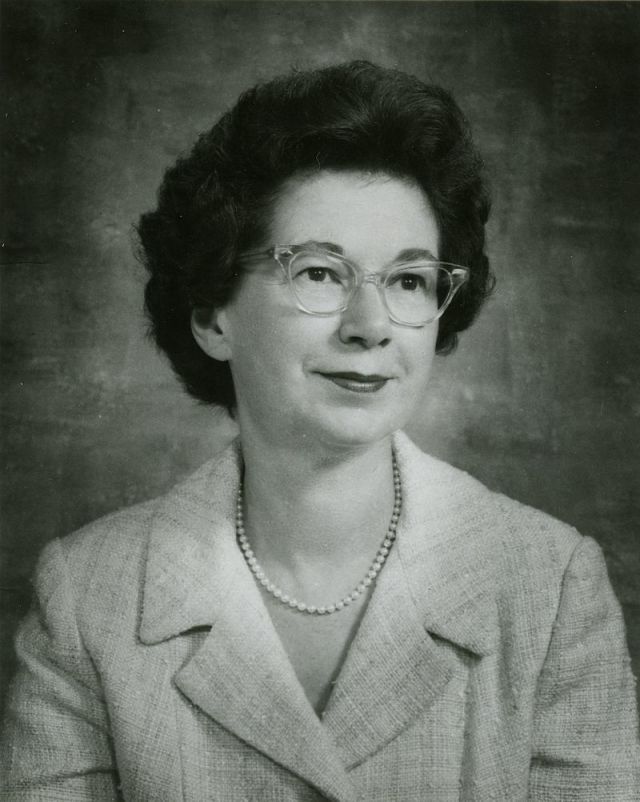Happy Birthday, Our Bev! Here’s to Another Century of Ramona and Beezus

Beverly Cleary in 1971
Beverly Cleary, novelist-laureate of Pacific Northwest childhood, turns 100—100!—on April 12. As a small birthday present, it might be nice to remind the former librarian (if you can be a former librarian) from McMinnville that she still pretty much rules authordom in Portland.
We named the Central Library’s children’s room for her; we immortalized her Ramona Quimby and Henry Huggins (and his dog, Ribsy) in bronze at Northeast’s Grant Park. Every school day, hundreds of kids report for duty at Beverly Cleary, a public school in roughly the same neighborhood where Cleary set her long series of novels about the Quimby/Huggins social ambit. Suffice it to say that Strayed, Palahniuk, et al have some distance to go to match our Bev.
Better yet, Cleary’s books—amazingly—still hold their own amid the YA explosion that has unleashed whole multiverses of Hunger Games and dreamy vampires. Kids still read them and identify with them, even though, despite some 21st-century rebranding, the texts themselves are capsules of an extinct midcentury America. Her characters speak pre-Internet middle-class English; Henry Huggins still delivers the Oregon Journal in the afternoons, which requires some parental explanation about the media and how kids used to pull their weight, dammit.
Even so, like a milieu out of Jane Austen or Anthony Trollope, Cleary’s Klickitat functions as a literary world in and of itself. The reader follows her most indelible characters—forthright Henry; earnest and good Beatrice “Beezus” Quimby; and, best of all, Beezus’s little sister Ramona, a brilliantly bleak and spiky-souled little anarchist—as they grow up in big, rangy narrative arcs of pre-adolescence, a permanently relevant theme.
There are anachronisms, of course. Most glaringly, the Portland of the Huggins/Quimby cycle no longer exists. Monolithically Caucasian, hetero, and English-speaking, her world is basically 1950s small-town Americana (with tiny, occasional glimpses of ‘60s bohemia and ‘70s stagnation). These are the “good old days” to which some of our politicians will always yearn to return. You couldn’t pay me to live there now. And it’s hard to imagine bright sparks like Beezus and Ramona lingering after graduating from Grant High: I envision Beezus as a humanities professor at an annoying little liberal arts school; Ramona as a Lower East Side artist with a turbulent love life.
On the other hand, Cleary also portrays inner Northeast Portland as a place where working-class people can afford to live without college degrees, working jobs bagging groceries, as Ramona’s father ends up doing at one point. Her stories are set in an America before real wages froze, before the $700,000 bungalow. It was a less interesting city, but in some ways a fairer one.
But—and here is why Cleary’s books are still really great—she never portrays this little world as easy. In fact, a really ambitious literary rebrand could take a page from Karl Ove Knausgard and call the whole series Ramona’s Struggle. The books zero in on the stretch of childhood between kindergarten and middle-school, more or less. That phase of life has changed less than we might think.
With two kids, one currently a Quimbyian eight years old, I see this firsthand. (We also happen to live on Klickitat, but well to the west of the Hollywood-ish swatch of Northeast where Cleary’s books seem, vaguely, to take place.) Cleary’s kids do not suddenly discover they possess magical powers. They do not set off down the Mississippi on rafts. (In fact, Lloyd Center constitutes a major destination.) They just grow up—day by day, year by year, fighting it out with each other and their ever-mysterious parents. Ramona, in particular, stages a grinding rear-guard action against Society, until she finally figures out how to make it work for her.
None of this has really changed. The plot-line in which the Quimby father labors to quit smoking can scandalize today’s children, who hold fanatical moralistic views on tobacco. A modern Henry Huggins would probably ride a hoverboard. Ramona would not chant the slogans of local-business TV ads—she’d probably obsessively watch YouTube clips of other girls belting out “Let It Go.” Beezus would be running a micro-loan nonprofit out of her bedroom. Ribsy would be named “Shasta.”
But these are details: Cleary’s core truth has not faded. Kids are kids. Many of them are still mini-guerrillas in the Ramona mold. The battle continues, hasta la victoria siempre. That’s why I fully expect a second Cleary century, and for Ramona to march on, fists clenched, for another 100 years.
